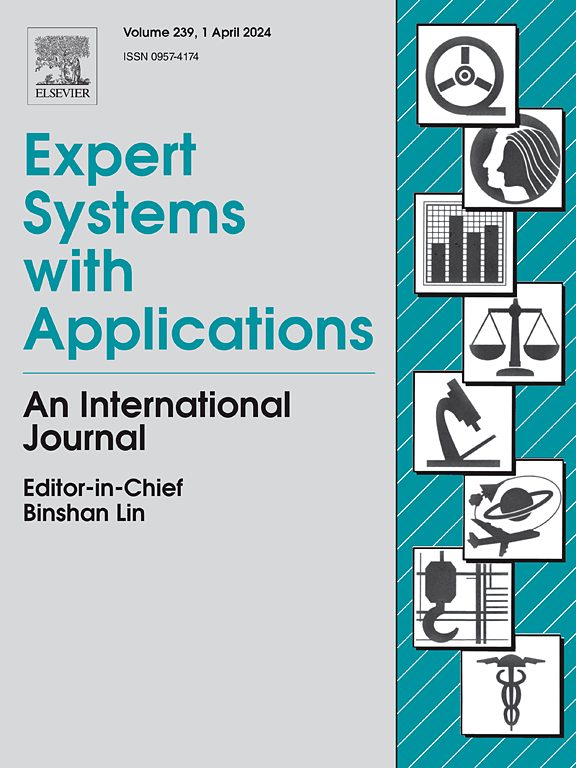Nighttime airport runway FOD intrusive detection through frequency-domain interference of spatially aggregated dynamic feature
IF 7.5
1区 计算机科学
Q1 COMPUTER SCIENCE, ARTIFICIAL INTELLIGENCE
引用次数: 0
Abstract
Accidental intrusion of foreign object debris (FOD) on the airport runway often causes fatal safety hazards in aviation transportation during take-off and landing especially at night as the degraded imaging quality. To address the false and missed detections in low-light images by current advanced methods, the Frequency-Domain Interference Network of spatially aggregated dynamic feature (FDI-Net) is proposed to improve the recognition accuracy of threatening FOD at nighttime. Firstly, to deal with the challenges posed by degraded low-quality imaging at night, we propose the Frequency-Domain Adaptive Tuning (FDAT) spatial pooling module, which utilizes fast Fourier transformation to construct frequency-domain features from the row and column pixels of FOD images. Subsequently, generating the wave function signal through the superposition of row and column components, and adaptively tuning the frequency and phase spectra using dynamically learnable weights within the network structure. This process effectively suppresses redundant information while enhancing the grayscale and texture feature space. Secondly, the Dynamic Granular Aggregated Interference (DGAI) module is developed to transform the FOD spatial features into amplitude and phase representations, enabling the extraction of fine-grained feature information through dynamic depth fusion. This module then aggregates the fine-grained features using the interference effects of sine and cosine waves to enhance positive FOD target information and suppress negative interference. Finally, the detection model is deployed on an embedded edge computing platform to develop a mobile nighttime airport runway foreign object debris detection system. Experimental results demonstrate that the proposed model effectively detects ten categories of small and medium-scale FOD targets, achieving optimal accuracy results of 97.9 %, 89.8 %, and 77.6 % on the mAP50, mAP75, and mAP50-95 metrics, respectively. In addition, our method achieves the accuracy of 94.5 %, 89.9 %, 85.2 %, 76.2 %, 92.4 %, 92.2 %, 95.5 %, 74.4 %, 97.5 %, and 99.5 % on ten categories, respectively. Consequently, the intelligent detection system holds significant potential for preventing accidents caused by FOD in the aviation transportation safety field.
基于空间聚合动态特征频域干扰的夜间机场跑道FOD干扰检测
机场跑道上的异物碎片(FOD)的意外侵入会对航空运输的起飞和降落造成致命的安全隐患,尤其是在夜间,其成像质量会下降。针对当前先进的低光图像检测方法存在的误检和漏检问题,提出了基于空间聚合动态特征的频域干扰网络(FDI-Net)来提高夜间威胁目标的识别精度。首先,针对夜间低质量图像退化带来的挑战,提出了频域自适应调谐(FDAT)空间池化模块,该模块利用快速傅立叶变换从FOD图像的行像素和列像素构建频域特征;随后,通过行分量和列分量的叠加产生波函数信号,并利用网络结构内动态可学习的权值自适应调整频率和相位谱。该方法在增强灰度和纹理特征空间的同时,有效地抑制了冗余信息。其次,开发动态颗粒聚集干涉(DGAI)模块,将FOD空间特征转化为幅度和相位表示,通过动态深度融合提取细粒度特征信息;然后,该模块利用正弦波和余弦波的干扰效应对细粒度特征进行聚合,增强正FOD目标信息,抑制负干扰。最后,将检测模型部署在嵌入式边缘计算平台上,开发了夜间机场跑道异物碎片移动检测系统。实验结果表明,该模型能够有效地检测出10类中小尺度FOD目标,在mAP50、mAP75和mAP50-95指标上分别达到97.9%、89.8%和77.6%的最优准确率。此外,该方法在10个类别上的准确率分别为94.5%、89.9%、85.2%、76.2%、92.4%、92.2%、95.5%、74.4%、97.5%和99.5%。因此,该智能检测系统在航空运输安全领域预防残障事故的潜力巨大。
本文章由计算机程序翻译,如有差异,请以英文原文为准。
求助全文
约1分钟内获得全文
求助全文
来源期刊

Expert Systems with Applications
工程技术-工程:电子与电气
CiteScore
13.80
自引率
10.60%
发文量
2045
审稿时长
8.7 months
期刊介绍:
Expert Systems With Applications is an international journal dedicated to the exchange of information on expert and intelligent systems used globally in industry, government, and universities. The journal emphasizes original papers covering the design, development, testing, implementation, and management of these systems, offering practical guidelines. It spans various sectors such as finance, engineering, marketing, law, project management, information management, medicine, and more. The journal also welcomes papers on multi-agent systems, knowledge management, neural networks, knowledge discovery, data mining, and other related areas, excluding applications to military/defense systems.
 求助内容:
求助内容: 应助结果提醒方式:
应助结果提醒方式:


